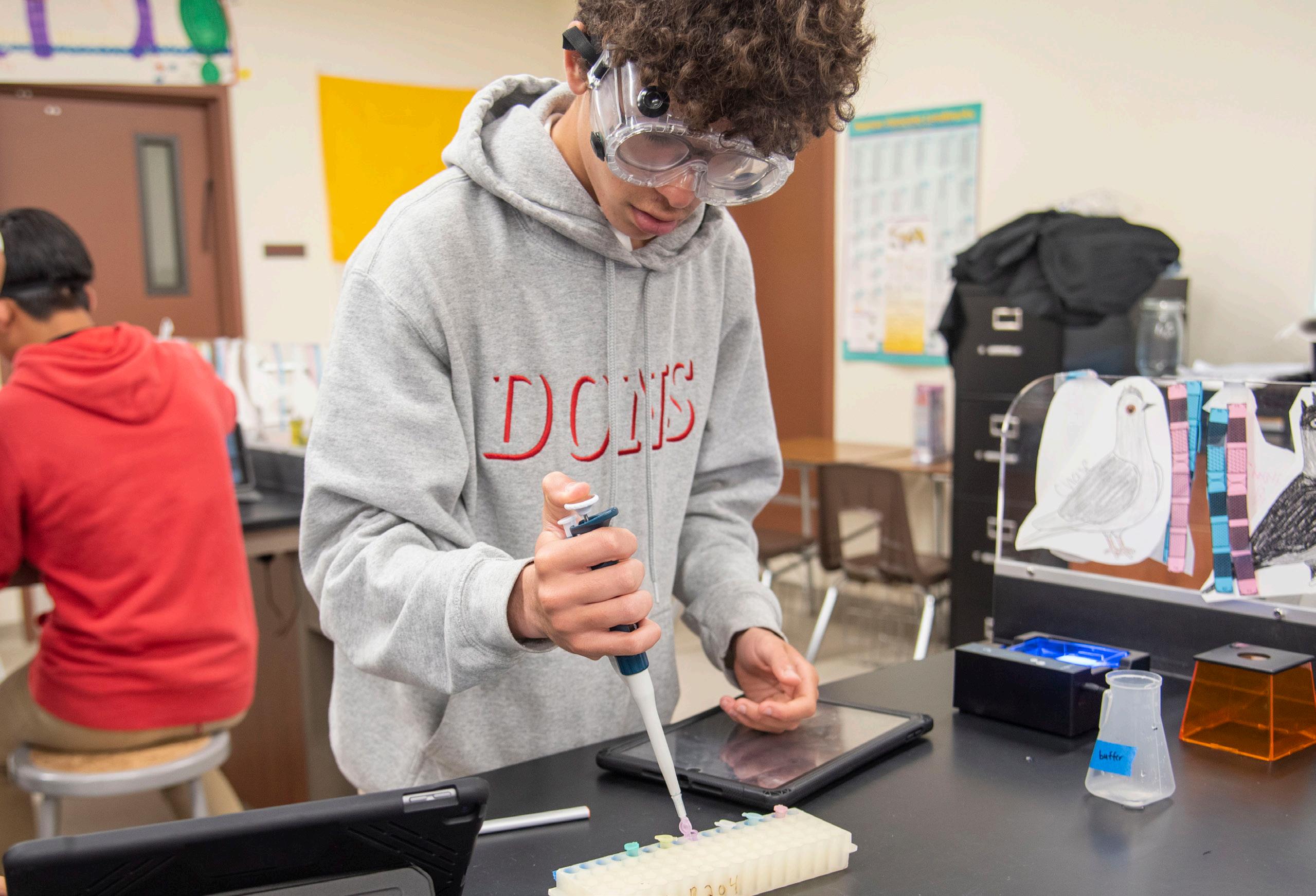
4 minute read
Academic Excellence Action Plans
Action Plan 1: Identify priorities for inter-department collaboration on key skills (e.g., writing composition) and integrate into the curriculum mapping process for each course.
◊ Identify the key academic skills most in need of inter-department collaboration (spring 2022-fall 2022).
◊ Review priorities in the Academic Committee comprised of department chairs and make recommendations (fall 2022).
◊ Identify research-based practices for approaching these skills across the curriculum. Create a plan for integrating key skills into the various class curricula via curriculum maps (spring 2023).
◊ Offer professional development as necessary for inter-department skill-focused instruction and assessment (fall 2023).
◊ Implement skill-focused curriculum at the course-team level (2023-2024).
◊ Review curriculum development attached to key skills at the department and Academic Committee level on a regular basis (spring 2024 and ongoing).
Action Plan 2: Evaluate school’s professional development program to increase efficacy.
◊ Develop an instrument to capture classroom-observation data aligned to student engagement (2021-2022).
◊ Develop a consistent survey process to evaluate current professional development offerings, including educational technology needs. Presentation on evaluation tool(s) will be made to the Academic Committee (fall 2022).
◊ Use survey data and observation data to inform professional development planning (2022-2023).
Action Plan 3: Develop a process for instructional and assessment methodology review and align professional development accordingly.
◊ Develop data collection processes for both classroom observations and student surveys. Identify schoolwide instructional and assessment needs based on course-level student performance reports and data collected from observations and surveys (spring 2022-fall 2023).
◊ Present instruction and assessment findings to the Academic Committee. Identify areas for instructional and assessment growth and develop a responsive professional development plan (spring 2023).
◊ Implement a professional development plan and evaluate classroom impact using observations, surveys and a year-end curriculum map review (2023-2024).
Action Plan 4: Improve the process for standardized testing data aggregation and analysis.
◊ Investigate PSAT data analysis tools offered by the College Board. Investigate best practices in implementing curriculum change using PSAT data (spring 2022-fall 2022).
◊ Identify priorities using 2021 PSAT data with the Academic Committee (fall 2022).
◊ Identify curriculum approaches in each department to address priorities (spring 2023).
◊ Implement curriculum approaches in 2023-2024.
◊ Evaluate success of curriculum approaches (spring 2025).
Action Plan 5: Develop a process for data aggregation and analysis of student integral outcomes (e.g., course surveys).
◊ Identify key benchmark assessments in course curriculum for collection, evaluation (with shared rubrics) and review (spring 2022).
◊ Develop surveys to collect ongoing student sentiment data (fall 2022).
◊ Review student performance over the 2022-2023 school year and present findings to Deans of Academics (end of year map update).
◊ Review survey data and department information to offer recommendations (start of year, fall 2023).
◊ Use 2022-2023 findings to inform curriculum development in curriculum maps.
Action Plan 6: Investigate, implement and evaluate a schoolwide approach to wellness among students and adults.
◊ Update website pages that focus on wellness awareness (spring 2022).
◊ Conduct a schoolwide student wellness survey (overall student wellness and review of current wellness programming). Review student wellness survey data and assess needs for programming (spring 2022).
◊ Articulate a cohesive student wellness program (fall 2022).
◊ Review and organize the current student wellness programming and parent presentations that serve student/community wellness.
◊ Research and review additional wellness resources and programs to augment current wellness programming.
◊ Identify wellness impact of current policies and practices (2022-2023). Communicate findings and review/revise schoolwide handbook and policies (spring 2023 and ongoing).
◊ Use student/parent exit surveys and polling to evaluate current student/parent meetings and presentations and identify needs beyond current programming (2022-2023).
◊ Use survey data for ongoing evaluation (spring 2023 and ongoing).
◊ Publish a comprehensive wellness program to all stakeholders (fall 2024).








